Hey, kids...insomnia is fun! It probably played a part in this piece of crazy:

Basically, I got thinking about the above and, coupled with the general inability to sleep that's been something of a plague over the past few months, I got inspired. This build is sort of 'West Coast gone horribly wrong'...the architecture is similar, but this incorporates the core idea you had about cross-wiring the Morphagene and Telharmonic. The notion proved too attractive to not play with.
So, yeah...there's an external in with an envelope follower, so you can derive CVs from amplitude. Then there's this composite oscillator-fiasco-thing: a TZFM VCO, a Mysterion (MakeNoise's waveguide modeler), and a Telharmonic. And between each, a DC-coupled mixer and a VCable dual polarizer, which allows both attenuation and inversion under voltage control. The idea here is to interconnect all of these things and create a composite not-exactly-oscillator-device, a sound source way more complex, crazed, and full of potential than any typical Buchla or Serge complex oscillator setup. Madness!
Triple VCA/mixer after this 'generator' section gets us into 'modifier' territory. And first up is Happy Nerding's utterly-bonkers FM Aid, a diabolical little thing that allows something akin to through-zero modulation with any audio source, which is simply nuts! The Doepfer uVCO next to it is there to provide a carrier signal for the FM Aid and can be used in either VCO or LFO mode. Then there's this filter-atrocity...a Doepfer A-106-1 (Sallen-Key Korg MS-20-style pair), which has an insert point in its resonance loop. Then there's a Chronoblob. Now, that thing is for the A-106-1's insert, to add a 'time lag' into the resonance path. BUT WAIT! There's MORE...the state-variable filter next to that is for the Chronoblob's insert point, this time allowing a VCF into the delay's feedback path. So these three modules are actually intended, in this very irresponsible and totally mad build, to work as a single unit, just like the whole 'generator' section. Again, this is way beyond normal West Coast, even though the cross-modulation idea is present here, too...albeit in a very insane way! Last up is very West Coast, though: a MakeNoise Optomix, two low-pass gates which mix the top row's voicing results together into one very out-there mono signal.
Then the bottom row. A noise gen and sample-and-hold sit next to Mutable Instruments newest chaotic device, the Marbles...you'll just have to read up on this one; it makes the Buchla Source of Uncertainty seem as predictable as DB's train schedule! Three VC Slope gens next, for sort of a Maths-and-a-half of that sort of thing, and then the quad LFOs of the Batumi. A Dual VCA rounds the 'modulator' section out, allowing modulation sources to alter other modulation signals' amplitudes.
And the 'processor' stage. Now, this has MakeNoise's triumvirate of processors, in a specific order. First, the Phonogene allows weird loop/screw-with/delay/sample behavior in mono. This gets handed off to the Erbe-verb, which not only allows addition of reverb (and a lot of tinkering with it!), it also provides a stereo image from the Phonogene's mono signal, so that the Morphagene has a full stereo signal to chew up and spit out through its granular/scrambly methods. I put these all down below the latter half of the voicing row so that that part's signal can go directly in, and having them up front means you have a better ability to play the processors (and modulators) manually without having to address the voice row specifically to alter things...but at the same time, the key VCF controls are directly above this, and these would be the most likely-to-be-messed-with controls besides the processors'. The whole thing goes directly to a stereo out, which provides a convenient headphone amp and also a second stereo input in case you want/need to parallel the Erbe-verb and Morphagene and mix one in and out of the other.
No, no multiples. I went jam-packed on this mutha, so my suggestion there would be to make use of either inline mults, stackable 3.5mm cables, or both when you need to multiple off of an output. Naturally, never mult outs together. Very bad. May make module go boom. Spendy. Bad burnt electronic smell. Ick. Also, no power supply on the panel; this was done with an Erica 126 x 6U cab in mind, which has built-in serious power, plus even with that and the big size, still only comes in at 480 EUR.
The idea? Make an instrument specific to that initial idea of yours. Not merely a modular synth; this build/bit of craziness contains segments intended to work as integral elements in four specific blocks, as I mentioned. I tried here to optimize the initial concept, throw together some crucial West Coast architecture concepts along with a little graveyard dust and black cat bones for the hoodoo factor, and see what emerged. And this was it, and damned if it doesn't seem like a SERIOUSLY interesting concept. Frankly, this was one of those things that I wouldn't mind building one of for myself...and I think I could guarantee that what I did with it would be totally personal and unlike anyone else's music realized on it.
Anyway, to answer that question above: no, not a founder. Just a long-time user of electronics for musical purposes. Of the around 50 years I've been involved in music in my lifetime, 40 of those have involved electronic or electroacoustic devices of some sort or another, sort of in conjunction with my time spent as a composer. It's...well, kinda what I do. Except while asleep...which, as I noted, I'm not right now.

